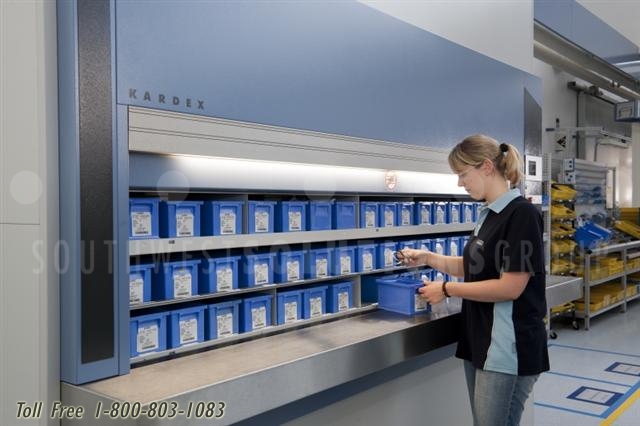
When combined with other storage solutions, such as horizontal carousels, vertical carousels, and vertical lift modules (VLMs) they can serve as efficient space management systems. These storage solutions can also work with any racking or shelving system to optimize the storage and location of your items.
Let us take a deeper look at what warehouse location management systems are and how they can help you optimize your inventory management and day-to-day warehouse operations.
What is a Warehouse Location Management System?
The warehouse location management system is a type of inventory management system. It is an integral part of warehouse management that works at the core of a warehouse or distribution center. The available software solutions help you navigate across the storage to fetch, store, or transfer items based on their location on a shelf, also known as a bin. It is therefore also called bin location management.
This warehouse location system works by comparing the specifications of the stock against the specifications of the storage space, allowing it to store any given size of stock in the best space-saving manner.
For example, it may take the dimensions and handling of the item, compare it to the dimensions and types of pallets, and set an appropriate storage location. Small but unrelated items might be stocked together to fill a smaller space so that the package does not take up a larger space where another larger item could be stored.
Warehouse Location Management System Benefits
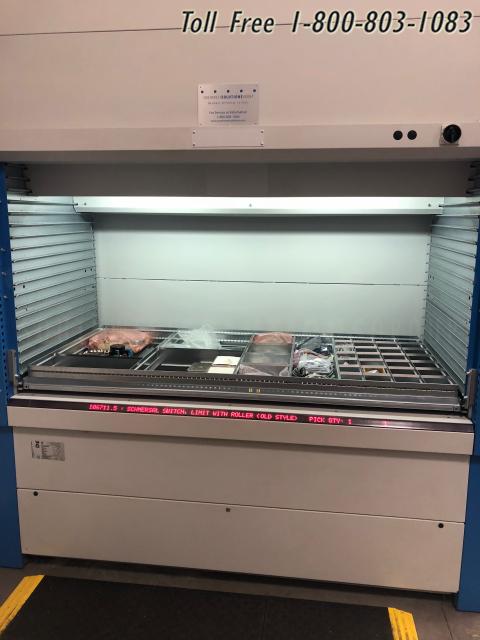
Pinpointing Product Location
One of the limitations of manually managing product location is that it has to be categorized and stored in logical groups. It is necessary because the items would be practically impossible to navigate otherwise. It becomes a disadvantage because such a manual process disrupts your space optimization and makes item retrieval inefficient. For example, when an uncategorized item needs retrieval, workers might need to check multiple locations.
When you’re using a location management system, the location gets processed automatically and stored on the server so that the actual storage can serve efficiency purposes. The indexing will allow item retrieval without any physical categorization. Your staff only needs to look up the bin number in the bin location inventory management system.
Pick Accurate Items Faster
The location management system minimizes handling costs and maintains accurate stock inventory to avoid mixups.
Bin location reduces the errors that may occur during the retrieval of the product. First, all products are indexed, labeled, and stored in the system so that you can track the precise location or bin of the product.
Second, while processing the retrieved product, it can be checked against the barcode, serial number, or another labeling to ensure that it is the right product and update it.
In the case of large warehouses, this also means that your staff is guided through the layout to access the location faster. The bin location can streamline order processing so that you can reduce shipping times and better serve your customers.
Maximize Warehouse Space
Apart from the categories and physical sizes, the products might also differ in the sales volumes, which can lead to problems in stocking, such as overstocking or understocking. Both understocking and overstocking can be problematic. If you are understocked, you might not be able to fulfill orders on time, losing potential buyers. On the other hand, if you are overstocked, you might be occupying valuable warehouse space. Your troubles worsen if the items are perishable.
Proper location management systems use bins and racking to help retailers stock the products efficiently. Moreover, if you stock fast-moving products together, you can use a more accessible area to store them so that they can be quickly retrieved compared to products that aren’t bought as frequently.
Optimize Warehouse Efficiency
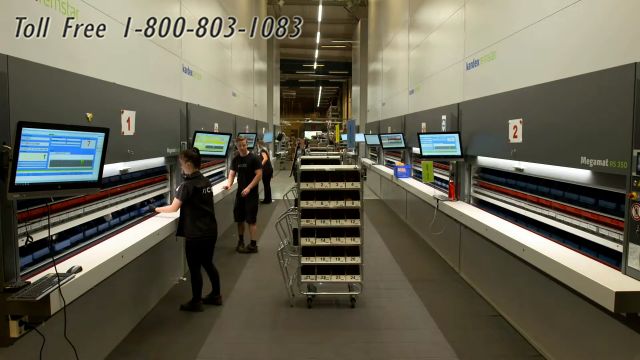
By enabling a statistical approach, warehouse location management systems help store, maintain, and retrieve items for shipping. Furthermore, it can also help in keeping the logistics efficient.
How Locations are Labeled in Warehouse Location Management Systems
Warehouse location management systems use “locations” as labeled areas in a warehouse to retrieve products as per the orders placed. An easy identification solution for pickup is by using labeled alphanumeric barcodes that pickers can scan. Barcodes help in indexing, which ensures that the current item is shipped. It also helps in the indexing and statistical control of inventory. A typical warehouse location management system consists of:
- Bins: A bin is the smallest physical unit of storage within a location. It might comprise one or more slots for products.
- Shelves: The immediate upper unit is the shelf or the row, which comprises the horizontal space spanning across a rack.
- Racks: The rack or section is the unit containing sections of shelving units that store the products.
- Aisle: Finally, the broadest indicator of the location is the aisle, which is the walking space between two racks.
How to Use a Warehouse Location Management System
Using a warehouse location management system is easy. Ideally, all the entries will be the staff’s responsibility, and managers only need to oversee the operations and authenticate the shipments. The system requires inputs when supplies have arrived and need to be stored, you need to move the inventory, or when items need shipping. Most of these processes may use barcodes and automation based on the scale and complexity of operations.
Let us look at each of these processes one by one:
Receiving the supply
The location management system comes into play right from the moment your supplies arrive. If your staff uses the system properly, inventory management should be fairly easy.
- When you receive the inventory from the supplier, ask your staff to log everything into the system.
- The system will assign a bin number for each item.
- This is where you should store the items. Items can be split into separate bins if there is a space shortage.
- Your items are logged and stored.
Update Bin Location During an Inventory Transfer
When your warehouse serves as temporary or intermediary storage or moves the items within your premise from one bin to another, the locations need to be updated in the bin location management system. This record should include:
- Transfer quantity
- Recipient warehouse
- Recipient bin locations
Retrieving the Items
When you have to retrieve the items, it is the opposite process to receiving but is equally easy and comprises just three steps.
- Start by creating a pickup list, including the bin location for your staff based on the sales orders.
- Instruct the staff to use the barcode scanner to update the inventory system quickly.
- Proceed to packaging and shipping. You have retrieved the product and updated the location management system with the new quantity.
Importance of Warehouse Location Management Systems
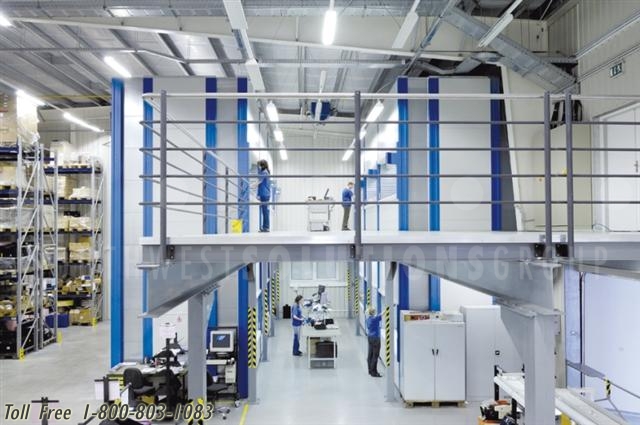
These systems also allow you to create a good layer of security that you can provide to your customers by reducing unintentional interference and preserving the integrity of their packages.
Lastly, the location system is permanent and scalable. Once set up, it does not need any major changes. Further, the system is easy to expand so that you can increase your storage space without disrupting your day-to-day warehouse operations.
How Southwest Solutions Group Can Help
Warehouse location management systems are one of the easiest ways to optimize your warehousing and storage. However, optimizing your warehouse space begins with selecting the right racking system for your warehouse. At Southwest Solutions Group, we believe solving space, productivity, and accuracy is essential to industry leadership. We specialize in providing versatile storage solutions ranging from industrial vending machines to storage and retrieval systems that offer maximum storage space while covering minimal floor area.
With our broad understanding of storage processes, we’ve helped numerous companies set up personalized warehouse solutions for efficient inventory management.
To speak with an expert, call us at 1-866-443-5670 or send us a message.

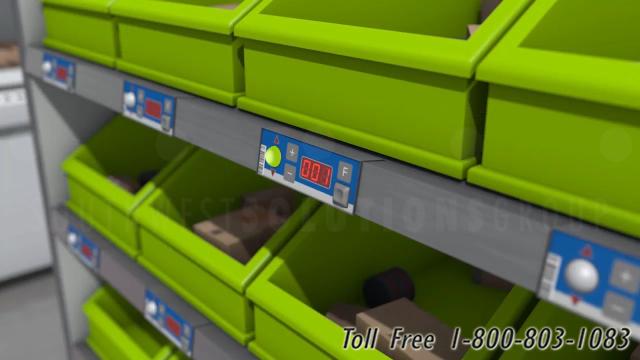
 Vertical Lift Modules
Vertical Lift Modules
 Order Picking Solutions
Order Picking Solutions VLM Infographic
VLM Infographic




